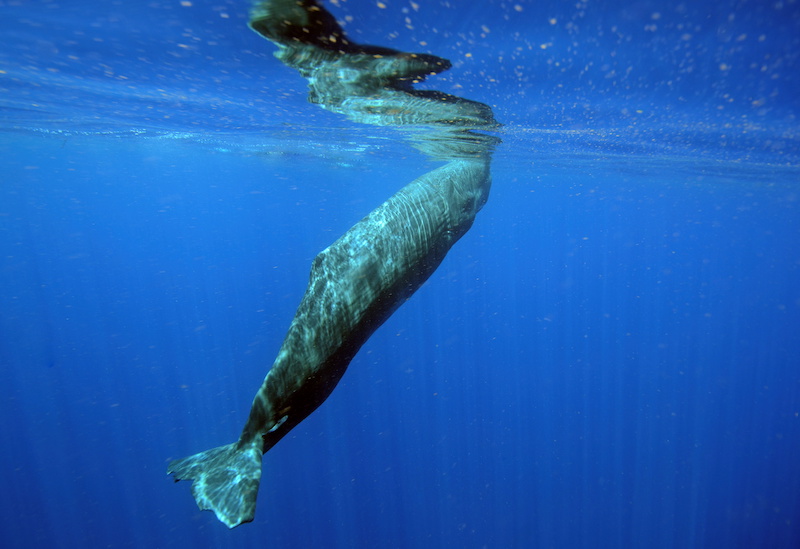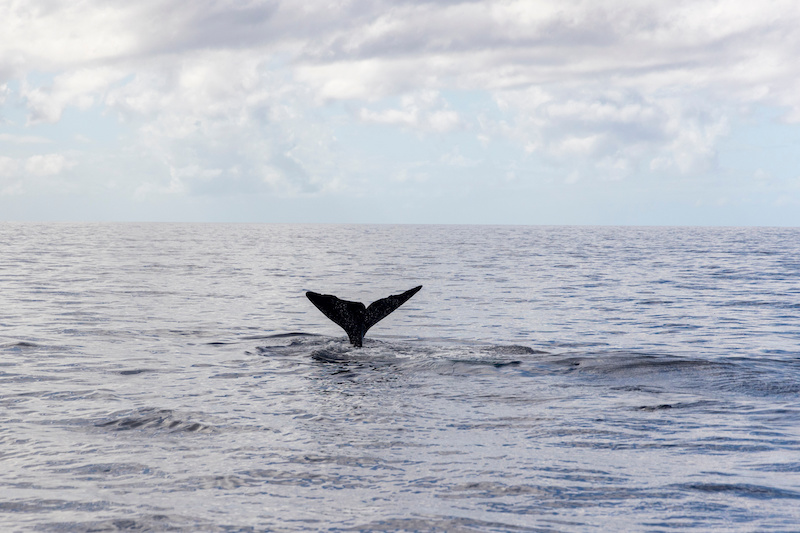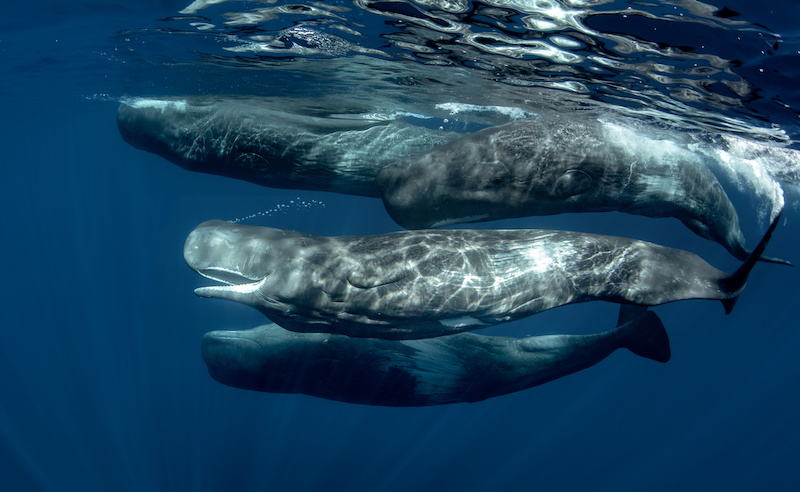
The Pygmy Sperm Whale, a mysterious creature of the deep seas, captivates the imagination and sparks curiosity. In this article, we delve into the fascinating world of this lesser-known marine mammal, exploring its unique characteristics, habitat, reproductive habits, and diet. Get ready to discover an astonishing animal whose discretion at sea conceals a rich and intriguing life.
Characteristics of the Pygmy Sperm Whale
The Pygmy Sperm Whale, or Kogia breviceps, is a fascinating marine mammal belonging to the Kogiidae family. This toothed cetacean is distinguished by its relatively small size, with a maximum adult length of 3.40 meters and a weight that can reach 400 kg. Its lifespan varies between 17 and 23 years, demonstrating successful adaptation to its marine environment. Morphologically, the Pygmy Sperm Whale has a stout and compact body, characterized by wrinkled blue-grey skin on the upper part, fading to white on the sides. Its head features a narrow and very short lower jaw, armed with 20 to 32 sharp, backward-oriented teeth, while the upper jaw is typically devoid of visible teeth.
The dorsal fin of the Pygmy Sperm Whale is small and slender, and its pectoral fins resemble the shape of a laurel leaf. A remarkable aspect of its physiology is the presence of spermaceti in its melon, an oily substance valued for its lubricating properties. This elusive and challenging-to-observe mammal is a fascinating example of marine species’ adaptation to their environment.

Habitat of the Pygmy Sperm Whale
The Pygmy Sperm Whale, an enigmatic marine species, primarily inhabits the deep and dark waters of the oceans. Preferring warm tropical and temperate zones, it is often found at depths of up to 600 meters, near the continental shelf. This preference for deep waters is linked to its lifestyle and feeding habits, as the Pygmy Sperm Whale is a skillful hunter of mollusks, fish, and crustaceans in deep waters.
Although it is mainly an offshore inhabitant, it sometimes approaches coastlines, attracted by the abundance of food. This occasional proximity to coastal areas provides rare but valuable opportunities for observation and study. The Pygmy Sperm Whale, through its habitat choice, illustrates the remarkable adaptation of marine mammals to the deep marine environments and their mysteries.
Reproduction in the Pygmy Sperm Whale
The reproduction of the Pygmy Sperm Whale is a fascinating and essential process for the survival of the species. These marine mammals reach sexual maturity around the age of four to five years. The gestation period lasts between nine and eleven months, after which the female gives birth to a single calf. At birth, the calf measures about one meter in length and weighs around 45 kg, marking the beginning of a nursing period that lasts approximately one year.
During this time, the young Pygmy Sperm Whale is entirely dependent on its mother for food and protection. Births tend to occur in spring, a period conducive to the abundance of food in their marine habitat. Annual reproduction is possible for these cetaceans, which is crucial for maintaining their population. The reproductive dynamics of the Pygmy Sperm Whale, though challenging to observe due to its deep and discreet habitat, play a key role in understanding its ecology and conservation.

Diet of the Pygmy Sperm Whale (Kogia breviceps)
The Pygmy Sperm Whale has a primarily carnivorous diet, well-suited to its deep marine environment. It feeds on a variety of marine prey, including mollusks such as squids and cuttlefish, as well as fish and crustaceans. These prey are typically hunted in open water or near the seafloor, in areas that can reach depths of up to 10 meters. The Pygmy Sperm Whale employs discrete and efficient hunting techniques, which are crucial in the dark and deep waters it inhabits.
Its ability to locate prey is facilitated by echolocation, a keen sense that allows it to navigate and hunt in the darkness of the depths. This rich and varied diet is essential for its development, growth, and ability to undertake extended dives. Understanding its diet provides valuable insights into its role in the marine ecosystem and the interactions among different species in its habitat.
Discover all cetacean species that can be found near the coasts of Martinique: